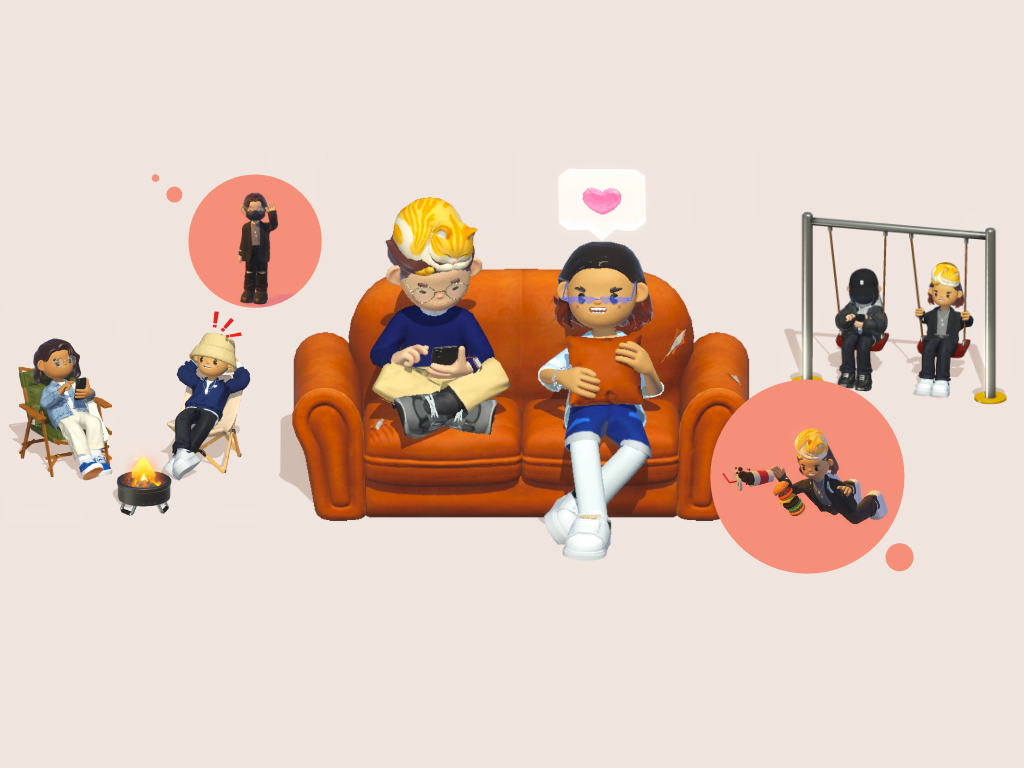When meta first became a buzzword I envisioned things akin to what I in anime, such as the virtual worlds in Psycho Pass or Summer Wars; abstract, inhuman avatars and a world unlike our own. Instead, we see a 3D rendered version of Mark Zuckerberg on a surfboard.

Although this may partially be owed to the pandemic, the connotation of a platform labeled as a metaverse seems to be tied to a reality mirroring our own; virtual classrooms, offices, hangout spaces, often in semi-realistic 3D styles with avatars matching your real-life persona. Take Spatial for example, where you have a 3D body but your head is an image of yourself.
The current trend of these budding online spaces seems to give priority to realism, just without certain real-life limitations such as geographical barriers and the laws of physics. This is of course, only possible if your bandwidth and computer specs are up to par. I personally struggle to participate in work meetings on Gathertown, a platform specialising in virtual workspaces; despite the graphics on the platform being 2-Dimensional and pretty minimalistic, I am unable to run the website especially with my camera on and while working on other work programs such as Figma.
So far, I don’t see any of these platforms catching on beyond remote work and the occasional online classes held by educators that are particularly passionate about Web3. Not many people are keen on metaverses as a social or lifestyle platform.
Yes, MMO games such as Roblox and Fortnite, which have been labelled as the metaverses, are extremely popular. However, the audience of people turning to these games to socialise is pretty limited. When you think of sharing your social life on the internet, you would probably use social networking sites (Instagram, Twitter, Tiktok) or chat apps ( WhatsApp, Discord, Telegram). It’s safe to say that for the time being, the world is pretty content with the format of our online life being made up of uploading and consuming media be it one way or two way.
Enter Bondee, a new player in the realm that bridges the conventional social network and the metaverse. It is growing in popularity due to its cute art style, customisable characters and spaces.
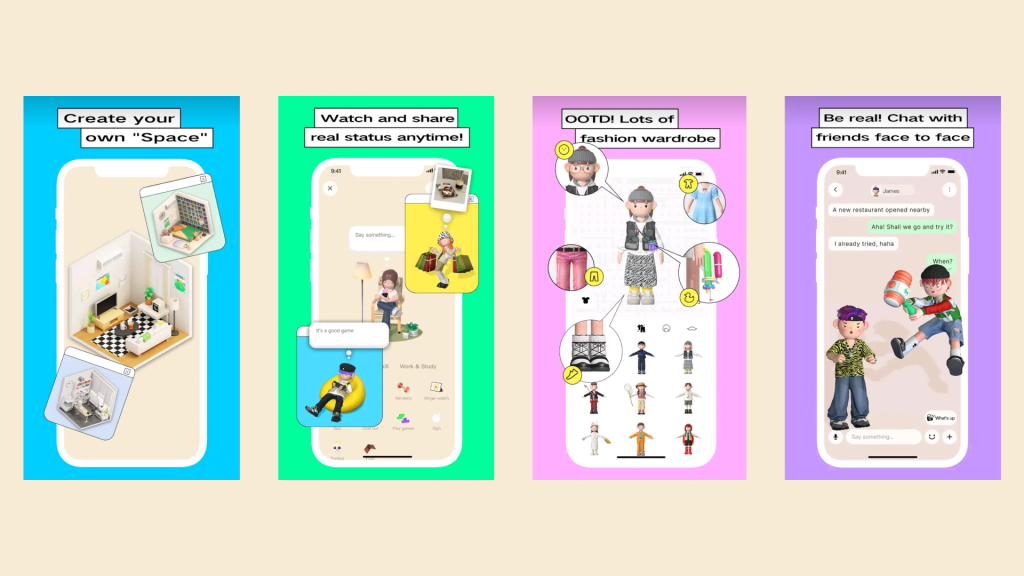
Bondee’s features and use can be broken down into two main areas The first being what they market as self expression through your customisable avatar, where you can select clothes, accessories, and facial features. The secondyour “Space” or the room where your avatar resides, with a range of furniture and decorative objects you can choose from.
These features are what helped Bondee rise in popularity, as it became a trend for users to create their avatar and Space, then share them on social media. This was likely intentional as Bondee also has buttons built in for you to save images of your character with a variety of preset backgrounds and layouts featuring the app’s branding, encouraging others to download the app and join in the fun.
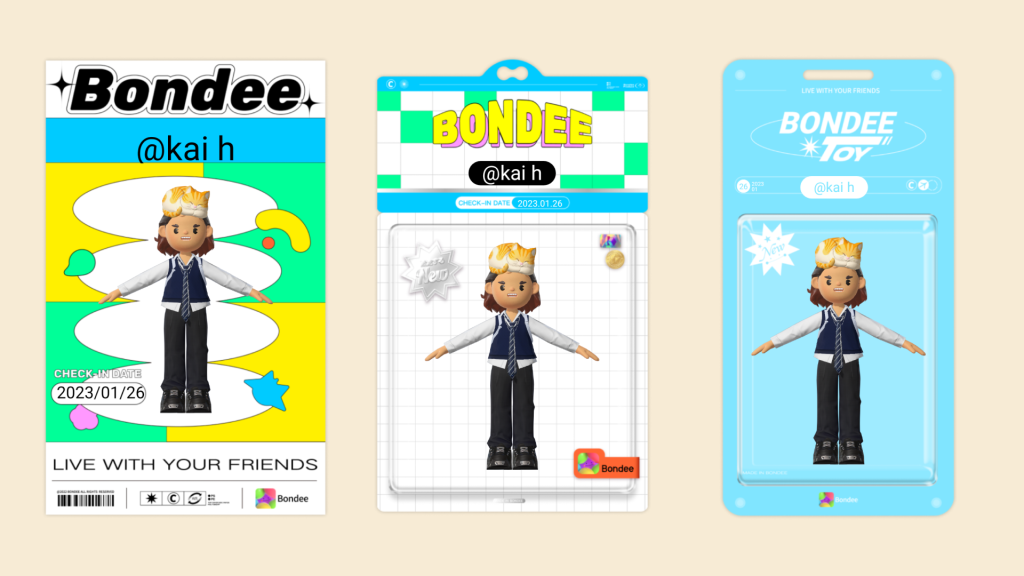
Even brands are hopping onto the trend by creating Bondee accounts and using images from the app (with characters and spaces designed in line with their brand mascots or products) as content in their social media posts and ads.
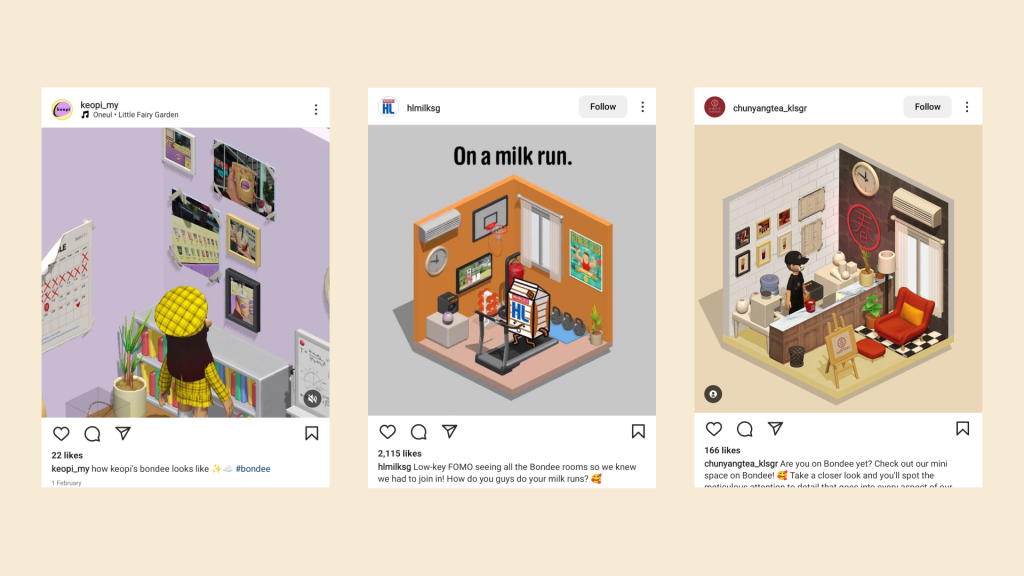
The others — less-shared but still enjoyed by users on the application — are the social features like as adding friends, posting statuses, and interacting with your friends by poking them, commenting on their status of the day or through messaging. Sound familiar?
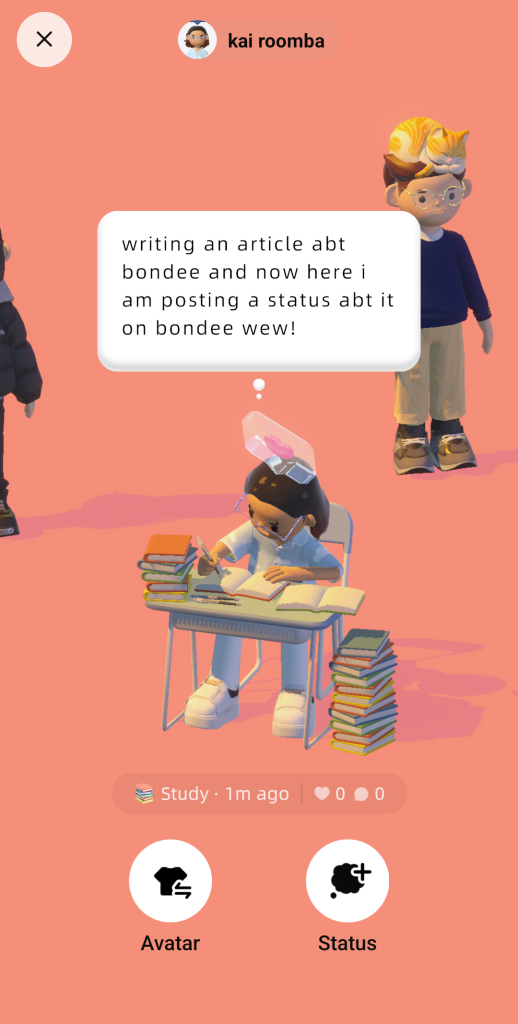
Many have highlighted that Bondee is pretty reminiscent of Facebook or even Myspace, just with 3D cartoon characters instead of a profile photo, that can do funny little movements and expressions based on the status you post. Think of it as more of an advanced emoji than a bona-fide virtual extension of your real life persona.
Whether Bondee and the minimal form of metaverse it represents is here to stay, sticking around, or simply a transitional phase before we all are virtually surfing with the Zuck himself, I do see a few things we can learn from this in the cultivation of new digital spaces:
- Know your audience. Bondee became trendy cause well, they knew what would be trendy, evident from the styles of clothing available for your avatar and the brand identity of the app overall. It’s also evident that the app is targeted towards Gen Z rather than focusing on being a space for everyone, which brings me to my next point.
- Your platform does not need to be the internet’s swiss army knife. Even virtual worlds should have limits. It’s not entirely necessary to host an entire universe in one place, or realistic to want the entire planet to want to stick to one platform. Bondee works in a way that coexists with other social media rather than aiming to replace it, although this may also lead to a decline in popularity as it has to continuously compete with existing social media giants.One of my qualms with the Meta approach to the metaverse idea is that concept of being able to have your entire life within one platform. Of course, having extra possibilities is a plus but it should not be the goal; if there’s anything I’ve learnt from my one room being the place I sleep but also where I work AND also my art studio, it’s that having distinct spaces for different areas of your life is healthy. It’s like how I text my grandma on WhatsApp, but my friends on Discord. I could easily contact everyone through one app, but it feels nice to have separate spaces. Plus, it’s always nice to avoid monopolies, for consumers to have room for choice between different features for different use cases (even if the choice is sometimes just an illusion, re: Instagram, Facebook, and Whatsapp all being run by Meta), and to have competition between the industry to push innovation to new heights.
- Hyperrealism is overrated. This one is a little bit subjective, but one of the beauties of technology to me is that there is room for abstraction. At the end of the day, the design of digital spaces will always be human and created in ways that easily fit into our schema of reality, but that doesn’t mean my meta-self needs to be a carbon copy of who I am in real life.
All in all, the popularity of Bondee does pose the question of what defines a metaverse and whether the term will grow to be an indicator of a platform type or simply a marketing category and buzzword. For weeks I’ve been wondering whether Club Penguin would have been called a metaverse if the term had been popular back in the late 2000s, and in writing this I’ve also begun wondering whether any new platforms in the near future will truly replace Web 2.0 social media or whether the existing platforms will simply evolve. The current landscape of Web3 to me — at least on the consumer level —looks a bit like big tech is simply bouncing ideas off walls and seeing what will stick, and while the metaverse is definitely a concept that is starting to have roots, I wonder if it will really grow or fizzle out of the mainstream eye as did VR in the 2010s.

